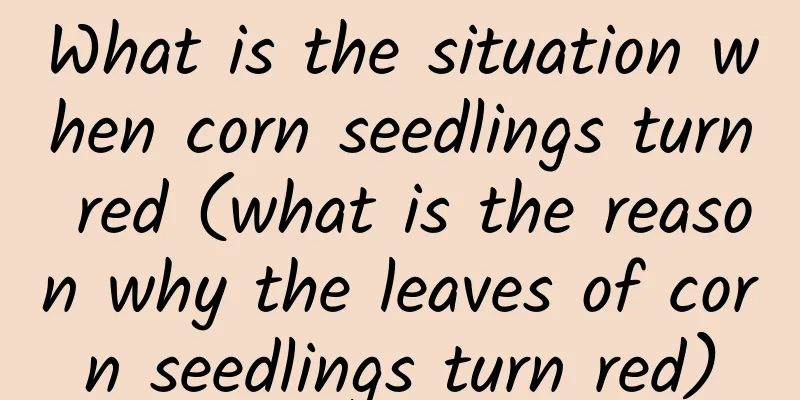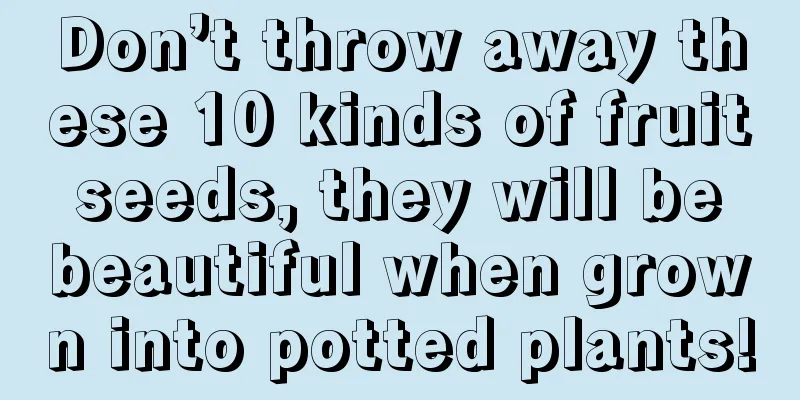What is the situation when corn seedlings turn red (what is the reason why the leaves of corn seedlings turn red)

|
If the soil is suitable after corn is sown, it will emerge from the ground in a few days, take the shape of a small trumpet, slowly unfold its cotyledons, and enter the seedling stage. Sometimes the leaves of corn in the seedling stage turn purple or red. What’s going on? First, variety characteristicsFor some corn varieties, the base of the leaves will turn purple-red during the seedling stage, such as Zhengdan 958, Ludan 981, etc.; for others, not only the base of the leaves is purple-red, but also the edges of the leaves are purple-red, like Dongdan 60. The corn seedlings are too small, and the leaf edges and sheaths are partially purple-red. At first glance, it looks like the corn in your garden is red. If this is the case, then it is not a problem of breed. 2. Phosphorus deficiencyCorn seedlings grow slowly and are slender, which are symptoms of a slight phosphorus deficiency. When phosphorus deficiency is severe, the leaves turn purple-red with purple tips, then die and turn dark brown. The old leaves gradually turn yellow and curl, and the base of the stems turn purple. Phosphorus deficiency in corn is most obvious in the seedling stage. If phosphorus is deficient at this time, the corn cobs will be short and bent, baldness will appear prematurely, the grains will be uneven, maturity will be late, and most of the grains will not be full. On the contrary, when the phosphorus supply is sufficient, it can promote the development of the root system during the corn seedling stage, make the roots grow early and quickly, and improve the quality and yield. Why do plants that lack phosphorus turn red?Because phosphorus is a component of important compounds in plants and is involved in various life activities of plants. Therefore, plants that are deficient in phosphorus grow slowly, are short, thin, and upright, have underdeveloped root systems, mature late, have small fruits, and have small leaves that are dark green and lack luster. This is mainly due to poor cell development, which leads to an increase in the density of chlorophyll. At the same time, the absorption of iron indirectly promotes the synthesis of chlorophyll, causing the leaves to darken in color, and even obvious purple-red stripes or spots on the stems and leaves of many crops, or even the death of the leaves. When the plant is deficient in phosphorus, the symptoms usually start from the old leaves at the base and gradually develop upwards. Different crops will show different symptoms when they are deficient in phosphorus. Corn, wheat, cotton, etc. will show purple-red color when they are deficient in phosphorus. If soybeans are deficient in phosphorus, their leaves will be dark green or dark green, not fresh, and will be small, pointed, narrow, and upright. If the deficiency of phosphorus is severe, the stems may turn red. How to prevent and treat phosphorus deficiency in cornJudging from the different growth stages of crops, the maximum demand for phosphorus is generally in the early stage, such as wheat at the 3-leaf stage and corn at the 5-leaf stage, both in the early stages of crop growth . Therefore, applying enough fertilizer when planting corn can basically meet the phosphorus demand during this period. Otherwise, the phosphorus nutrition is in short supply during the period of maximum efficiency, that is, before the 5-leaf stage of corn, and corn production will definitely decrease. The fertilizers selected are mainly nitrogen, phosphorus and potassium triple compound fertilizers, diammonium phosphate, etc. Phosphorus has the problem of poor mobility. When applying phosphorus fertilizer, it is best to apply it near the crop root system to facilitate contact and absorption by the root group. Concentrated application of phosphorus fertilizer is a more effective way to improve its utilization rate. Phosphorus fertilizer is mainly seed fertilizer and base fertilizer, supplemented by foliar fertilizer. Applying enough seed fertilizer in the seedling stage can not only meet the growth needs of the seedling stage, but also be used in the growth period . In the later stages of growth, crops mainly meet their needs through the redistribution and utilization of phosphorus in the body. Therefore, most crops can basically meet their phosphorus needs as long as they are given enough phosphorus fertilizer in the early stage of corn and other crops. The response to phosphorus in the later stage is much worse. In the middle and late stages, it can be supplemented by adding phosphorus fertilizers such as potassium dihydrogen phosphate to the leaves. |
Recommend
When is Henan garlic harvested? In which month is it harvested?
Henan garlic harvest time Henan garlic is general...
Ranunculus cultivation methods and precautions
1. Breeding methods 1. Water: After its new shoot...
How to prepare orchid soil and how to prepare culture soil
Orchid soil requirements Different orchid varieti...
The difference between grapes and bitter melon
Momordica charantia Bitter melon is native to the...
What to do if the buds and flower buds of Cymbidium orchids dry up? How to maintain them during the bud period
1. Increase lighting The drying of its flower bud...
Cultivation methods and precautions of Japanese begonia
1. Breeding methods (1) Soil: Acidic or neutral s...
What should I do if scale insects infest the Buddha's seat lotus?
Symptoms of scale insects on Buddha's lotus I...
How to grow dragon beard orchid well
1. Giving Light It is afraid of strong light and ...
How often should I water my gemstone?
How often should I water my gemstone? The amount ...
What should I do if the vines of the green ivy are too long? How can I make a climbing frame or winding shape that looks good?
1. Proper pruning If the vines of the green ivy g...
Benefits and Uses of Elderberry
1. Reduce swelling Wash the elderberry and eat it...
What kind of flowers can be hydroponically cultivated in summer
1. Clivia It can not only be grown in soil, but a...
Management methods of Koelreuteria paniculata seedlings
Maintenance of Koelreuteria paniculata seedlings ...
How to improve the germination rate of peacock grass
How to improve the germination rate of peacock gr...
Cultivation methods and precautions of fuchsia
1. Breeding methods 1. Temperature: It is best to...









